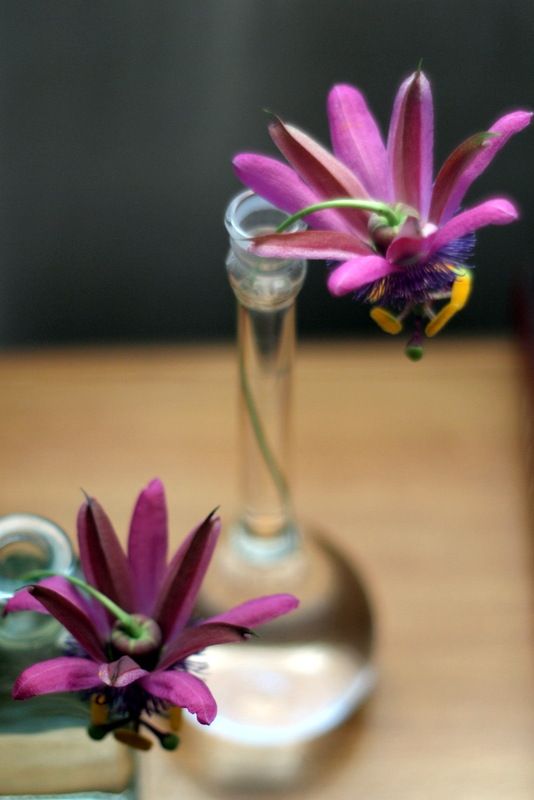The garlic passionflower, P. loefgrenii, is supposedly one of the smaller, less-rampant species, described as a 10-footer, but that’s the size it’s reached in just its first year in my garden. The vine is planted against the eastern boundary fence, facing west, soaking up strong but coastal afternoon sun. It’s new to cultivation, so not much information is available on it yet. My vine comes from Annie’s Annuals & Perennials. Nice long stems for small vases, though it’s short-lived as a cut flower. The reflexive petals give the flower a wonderful dodecatheon/shooting star form. Native to coastal Brazil, the garlicky-tasting fruits are edible. If and when my vine bears any fruits, I know I will not be sober when I have my first taste.

Outside it’s suddenly everywhere. Running along the fence, threading up into the 12-foot pittosporum pruned as a standard. As with all passifloras in a climate they approve of, this behavior is both thrilling and alarming at the same time. Some species of passiflora have become naturalized in Southern California, and chain-link fences have been known to disappear completely under the vines, which is exactly the point of a vine anyway as it relates to a chain-link fence. But I do fear for the pittosporum. For the moment, I’m loving the intensely purple UFO’s delicately weaving through the pale variegated leaves but will keep a sharp eye out for any throttling tendencies. My Sunset Western Garden Book, 40th Edition, says to “prevent buildup of dead inner tangle, prune annually after second year, cutting excess branches back to base or juncture with another branch.” In its second year, I resolve to do this faithfully.


I’m hoping the pittosporum can handle some passiflora love.



… garlicky?! I’m intrigued. When you finally get to try them, you’ll have to let us know what you thought of that taste! (After you sober up, of course. 😉
The blooms are gorgeous, by the way.